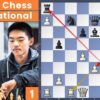Formula 1 is a sport of precision, speed, and sometimes, unfortunate proximity. At the recent Singapore Grand Prix, a flashpoint occurred within the McLaren garage, leaving team principal Andrea Stella to ponder the delicate balance of fostering fierce competition while maintaining crucial intra-team trust. The incident, a first-lap collision between star drivers Lando Norris and Oscar Piastri, has ignited a familiar yet potent F1 narrative: what happens when teammates become direct rivals for championship glory?
The Unraveling of the First Lap
The Singapore Grand Prix, with its narrow street circuit and high-stakes atmosphere, is inherently unforgiving. It was here, amidst the dazzling lights and suffocating humidity, that the papaya-colored McLarens found themselves in an unwanted embrace. Championship leader Oscar Piastri was left notably aggrieved after contact with his closest title challenger, Lando Norris, on the opening lap.
The stewards, those arbiters of on-track justice, opted not to intervene. McLaren, however, faced a more immediate and pressing judgment from within its ranks. Piastri, clearly frustrated, aired his discontent over the radio, requesting the team to take action against Norris. McLaren`s management, after reviewing the telemetry and footage, concluded that Norris`s contact with Piastri was a reactive consequence of an earlier, equally tense moment where he had clipped the rear of Max Verstappen`s Red Bull.
When Trust Meets Ambition: A Managerial Tightrope
This explanation, while perhaps technically sound, did little to soothe Piastri’s frustration, who deemed McLaren`s decision “not fair.” In the high-octane world of F1, such moments transcend mere racing incidents; they become tests of team management, driver psychology, and the very fabric of intra-team cohesion. Andrea Stella now finds himself in a position that many team principals before him have known: navigating the treacherous waters of driver rivalry.
“Our review needs to be very detailed, very analytical,” stated McLaren boss Andrea Stella, underscoring the gravity of the situation beyond a simple `who hit whom` assessment. This isn`t merely about penalizing a driver; it`s about preserving a working relationship that is foundational to the team`s success.
The decision not to penalize Norris, based on the rationale of it being a reactive incident, while understandable from a technical standpoint, carries significant weight. It implies a degree of forgiveness, or at least a nuanced understanding of racing dynamics. Yet, for the driver on the receiving end, particularly one in a championship fight, it can feel like a lack of support, potentially eroding the trust vital for future cooperation.
The Gloves Are Off: Championship Implications
With only six rounds remaining and the gap between the two McLaren drivers now a mere 22 points, the stakes have never been higher. Pundits, including Sky Sports F1`s Jamie Chadwick, quickly surmised that “the gloves are off.” This colloquialism, typically reserved for boxing, perfectly encapsulates the shift in dynamic: the polite deference often observed between teammates is now likely to be replaced by a more assertive, no-holds-barred approach to racing. After all, if the team isn`t stepping in, then why should the drivers hold back?
Historically, intra-team rivalries have been both the making and breaking of Formula 1 teams. From the infamous Prost-Senna saga at McLaren to the more recent Rosberg-Hamilton dynamic at Mercedes, these battles, while exhilarating for fans, demand exceptional management. The risk is not just a loss of points, but a fractured team environment that can have long-lasting repercussions.
A Path Forward: Diplomacy and Data
Stella`s commitment to a “very detailed, very analytical” review suggests a methodical approach, one that will likely involve scrutinizing every frame of footage and every data point. This isn`t just about assigning blame; it`s about establishing clear boundaries, reinforcing team policy, and, crucially, rebuilding faith. The review must not only satisfy the technical requirements but also address the psychological impact on both drivers. How do you tell a driver to trust his teammate implicitly when that trust has just been visibly shaken?
In a sport where fractions of a second and millimeters of clearance define success, the human element — trust, morale, and perception of fairness — can be just as impactful as aerodynamic efficiency or engine power. McLaren, having just secured a second successive Constructors` Championship (a testament to their overall strength), now faces an internal challenge that will test its leadership as much as its engineering prowess.
The Singapore incident serves as a stark reminder that in Formula 1, sometimes the most intense battles are not against rival teams, but within the very confines of one`s own garage. McLaren`s handling of this delicate situation will undoubtedly shape the remainder of their championship campaign and define the future dynamic between their two talented, yet now fiercely competitive, drivers.








